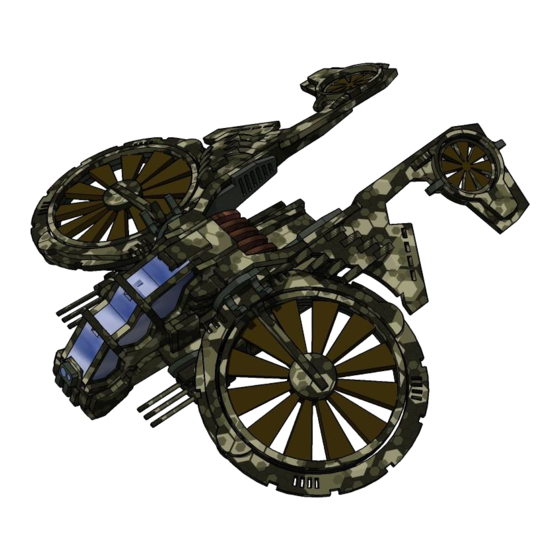
Advertisement
Quick Links
Preparation
Once you clear some table space you will need a
hobby knife and glue (PVA, wood glue, hobby glue)
and a file or small piece of sandpaper to be used for
cleaning up any tiny imperfections.
It's a good idea to familiarise yourself with how the
pieces fit together before gluing.
Some parts of this kit are very
fine, or have engraving very
close to edges. Make sure you
cut through any tabs carefully
with a hobby knife first to avoid
damage.
The exclusive copyright on the model designs are the property of Waggys Workshop Ltd. © Copyright Waggys Workshop Ltd., 2018. All rights reserved.
Getting Started
I. Parts should remove easily from the board by
pressing through and popping them out. It's a
good idea to cut through the tiny joins first
though, and some parts (particularly smaller,
more detailed parts) may need more careful
persuasion.
II. Use a file or sand paper last to completely
remove the tabs that might remain.
III. Parts may be a very tight fit, slight trimming
or sanding of parts may be needed for ease of
assembly.
INSTRUCTIONS
Tornadodo
Construction
Slot the parts together as shown by the pic-
tures below, applying glue wherever there is
a connection.
Allow the model to completely dry before
painting it. This is a complex kit with many
small parts. Allowing each section to dry
thoroughly before heading to the next is
strongly recommended.
Advertisement

Summary of Contents for Miniature Scenery Tornadodo
- Page 1 INSTRUCTIONS Tornadodo Preparation Getting Started Once you clear some table space you will need a I. Parts should remove easily from the board by hobby knife and glue (PVA, wood glue, hobby glue) pressing through and popping them out. It’s a...
- Page 3 It’s a good idea to familiarise yourself with how the stand locates at this point. Note that it will work with and without the troop pod. Make sure the Stub Wings are horizontal.
- Page 9 Glue the lower stabilizer surface securely to top of the engine exhausts. There will be a gap here:...
- Page 11 You can give the tail rotors a bit of twist before gluing them in place for a more exciting look.
- Page 14 This can be a tight fit.
- Page 17 Toothpicks (2mm diameter) 25mm long.
- Page 18 The Easy way. This Kit Provides alternative parts for the rotor assembly. A simple, one piece , flat part and a more involved option that al- lows for More Complex, but WAY cooler angled blades. A Jig is also provided to help align the individual rotor blades (green) Be VERY CAREFUL not to glue...
- Page 19 DO NOT GLUE ANYTHING TO THE GREEN JIG!!!!!!! DO NOT GLUE ANYTHING TO THE GREEN JIG!!!!!!! ( I may have mentioned this earlier...)
- Page 20 Choose the angle you want to place the rotor blades at and carefully glue them in place, work- ing alternately from opposite sides. Superglue is useful here. Position the part first, a place a drop of superglue where the parts con- nect.
- Page 21 DO NOT GLUE ANYTHING TO THE GREEN JIG!!!!!!!
- Page 26 Push the locating tabs onto the top of the pod and slide the pod forward a few mili- meters. You shouldn’t need glue.
- Page 27 These fins are supplied as an alternative to the troop pod, because it does look kinda cool without it. Your choice.
- Page 28 Remember while you a struggling to make the @#$% stand fit, the fuselage is tipped forward at an angle.










Need help?
Do you have a question about the Tornadodo and is the answer not in the manual?
Questions and answers